#Battle for new york
Explore tagged Tumblr posts
Text
Leo: Look, I know we don’t see eye to eye, but I think-
Slash: That’s because you’re too short to do so.
Leo: …
Leo: Listen here you-
#incorrect tmnt quotes#source: tik tok#tmnt 2012#tmnt#teenage mutant ninja turtles#leonardo#slash#battle for new york
286 notes
·
View notes
Note
Yo what are your personal fic recs
Hoo boy
Battle for New York - @imdefnotvanessa
We'll Meet Again, Soon - @chiangyorange
Violet Neon Nitro - @tractort33th
Very Thoughtful - @/theashemarie (i feel bad for tagging them again)
Travelling Memories - @camilieroart
Totpocalypse Au - @pastadorable
Only a small amount for now ^^
Authors, if you don't want to be tagged when your fic is mentioned, please send me a message!
#Rottmnt#Rottmnt fic#Rottmnt fic rec#Rottmntficrecs#wmas#peepaw multiverse#Battle for new york#Violet neon nitro#Very thoughtful#Travelling memories#totpocalypse au#Fuck tags man these suck#rise of the tmnt#rottmnt#rottmnt fic#rottmntficrecs#rise of the teenage mutant ninja turtles#rise of the turtles#rottmnt fic rec#tmnt
202 notes
·
View notes
Link
Summary: The Kraang are defeated, New York is safe and all is finally well. Or so everyone thought. When Kirby bursts into the lair looking for April, the Turtles quickly discover otherwise and the nightmare begins anew. Set after S3E13. 2k12 Canon divergence.
What it Means (to be Human) Ch 1
What had happened to her?
Suddenly, Casey rushed her, swinging out hard with something long, thin and wooden – a hockey stick, she realised in disbelief, staring at it as it seemed to move in slow motion before whoomph! It slammed heavily into her helpless body, sending her flying into the wall and knocking what little breath she had from her lungs.
“What is going on in here?” she barely registered a stern voice demand. “Where is April?”
“I don't know, Sensei, but we've been found,” Casey answered grimly.
Angrily.
Casey faced her again, weapon drawn back to attack and weakly, she tried to get up, tried to tell him it was her and that he must be seeing things like last year when they ran afoul of those hallucinogenic, mutant mushrooms but she was too weak and barely moved even a smidgen. She could barely even draw oxygen and it was getting worse by the second.
Suddenly, as his hockey stick was about to slam into her once more, the world around her began to dissolve and her maniac friend disappeared from view.
Exhausted, confused and in pain beyond all reason, she felt her eyes closing and she simply stopped fighting.
https://archiveofourown.org/works/52498936/chapters/132808552 or https://www.fanfiction.net/s/14310368/1/What-it-Means-to-be-Human
#tmnt#2k12 au#april o'neil#mikey#donnie#battle for new york#canon divergence#references to#into dimension x#the invasion
0 notes
Text
Quick reminder of how adorably excited Leo and Mikey are to see Donnie in this scene.

... that is all.
#rottmnt#tmnt#battle nexus: new york#my post#alt text#look at their faces!#mikey's nuzzling#leo's happy hand pats#it's adorable#rise of the tmnt
3K notes
·
View notes
Text
have i been calling it the Battle of Manhattan this entire time when it's actually the Battle of New York???? NOT A SINGLE SOUL TOLD ME??? NO ONE WAS LIKE "HEY BESTIE A WEE BIT CONFUSED WHY WE'RE MENTIONING THE FAMOUS BATTLE FROM 1776????" NO ONE???? NOT A SINGLE PERSON????? THERE'S 400K WORDS IM NOT GOING THROUGH ALL OF THAT TO FIND EVERY TIME I MENTION IT AND I MENTION IT SO MUCH dudes. dudes. dude.
246 notes
·
View notes
Note
I just noticed in Battle Nexus: New York, when Draxum was trying to convince the co. that they were trapped in a mind-illusion he asked where the turtles were: the colors of Leo and Donnie were switched. He mistook the twins' colors, that's hilarious!
They're basically identical, duh!


#Anonymous#answer#i couldn't stop myself from posting that edit sorry#baron draxum#leo#donnie#the lair#edit#smart lair#battle nexus: new york#rottmnt#rise of the teenage mutant ninja turtles
1K notes
·
View notes
Text
Man “Battle Nexus: New York” was a great episode but I do have one major gripe with it.
Like. Raph being paired up with Ghostbear? Makes sense. Works great. Works amazing, even.
Mikey being paired up with Meatsweats? Yeah that checks out!!
Donnie getting…Hypno…? I mean. I guess Donnie doesn’t like magic so it kindaaa works but Kendra would have been a much better choice to me personally. Maybe Big Mama didn’t wanna include a human or something…
And Leo getting…uh…one of the Sando Brothers???? Of all villains? Nah let’s be real, his main villain is more Big Mama herself (or Leo could be considered his own worst enemy lmao-). Hell Hypno would have probably worked better here considering their shared love for magic tricks and stuff, but Carl Sando????
#rottmnt#rise of the teenage mutant ninja turtles#battle nexus: new york#nah this will always be baffling to me#like no joke big mama really is Leo’s main villain so it makes sense that she’s not paired with him#given that she’s running this all#but giving him ONE of the Sando brothers?? not even both???#outrageous#hypno or even warren would have been better here tbh#at least there’s some basis there for both and either option would have been so fun#not that what we got WASNT fun it def was but the sando bro was the weak link because no one cares about him#and I would have killed for a Donnie Kendra forced team up 😭#Donnie also could have worked with Stockboy ig or hell even Repo tbh?#but Kendra is the much more interesting and fitting choice here for him imo#honestly though this post was made because I do NOT understand the choice of CARL SANDO#both of them together are forgettable enough#separating them gets rid of the one thing they even had#I remember watching and being like who tf is that#he’s got some funny moments but man anyone would have been better 😭#going back to Kendra and Donnie because I LOVE their dynamic#the result of their team up could have ended exactly the same as canon#only instead of Kendra not knowing chess it’s instead her and Donnie arguing about what the right move would be#and they never actually make a move because of it
390 notes
·
View notes
Text
Daily Rise Quotes: DAY 641
Leo: Then hit me! Right in the old peepers with your pointy pinchers!
Carl: I was already gonna do that before you even said it!

(Season 2, Episode 11 - Battle Nexus: New York)
#rottmnt#rise of the tmnt#rise of the teenage mutant ninja turtles#quote#risequotes#day 641#alt text#tmnt#leo#carl sando#battle nexus: new york#battle nexus new york
55 notes
·
View notes
Text

One gangster lies dead next to a bullet-ridden car after a battle between police and a gang in August 1931. The police chased the hoodlums for five miles and the fight resulted in 6 being killed and several injured among innocent bystanders. This followed on President Hoover’s appeal to police chiefs to quell the gangster peril in principal American cities.
Photo: Associated Press
#vintage New York#1930s#gangsters#criminals#hoodlums#police chase#crime#cops & robbers#gangs#1930s crime#1930s New York#gun battle
67 notes
·
View notes
Text
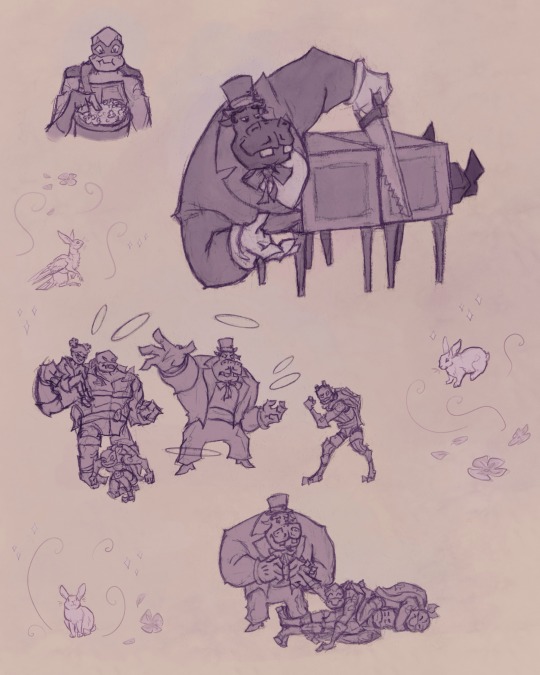

Day 24 of TMayNT: Favorite turtle + villain dynamic
I chose Hypno-potamus from Rise of the TMNT for this prompt :]
I love his character development and how he seems to grow a soft spot for the turtles.
These sketches are redrawn from screenshots except for the doodles of rabbits, doves etc :]
(Note: I chose to draw Hypno in a top hat rather than a turban because one of the writers who worked on the show said that Hypno was not wearing the turban for religious reasons. It was part of his costume. Also, Hypno’s canon design, especially as a human, has similarities to harmful stereotypes of Romani people—so a few of Hypno’s fans on here including me like to depict Hypno with a top hat instead.)
the TMayNT challenge is hosted by @mikasleaf see more at @tmaynt
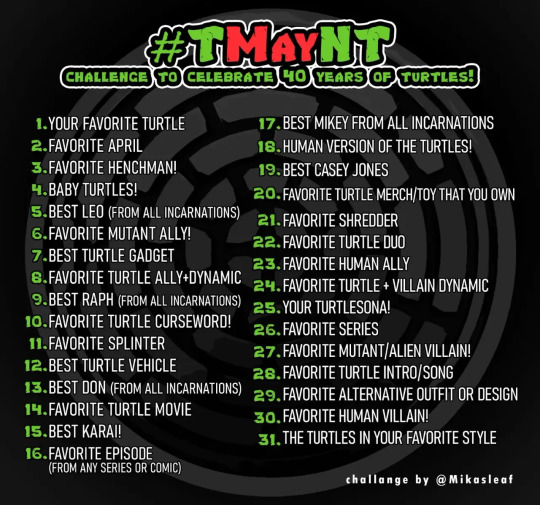
#sofia’s art#rottmnt#rise of the tmnt#rise hypno#hypno potamus#rise leo#rise raph#rise donnie#rise mikey#rise april#tmaynt#tmnt art challenge#studies#sketches#leave hypno and leo alone for a moment and hypno starts putting on a magic show#leo loves magic so much it would have been fun to see those two become friends#i think hypno would have been excited for a fan unlike ghost bear and meat sweats#hypno really did seem happy when donnie mikey and leo reunited in battle nexus: new york#and he took his role helping donnie seriously even though he didn’t know how to play chess and it seemed like only donnie was in danger#in the movie neither hypno nor leo seemed to take their fight very seriously hypno didn’t even take out his rings#also I didn’t draw anything about it but in a deleted scene for the movie in the bad future hypno and warren are on the turtle’s team#not only that but they appeared to be in leo’s inner circle they were with the people who we’re going to go back in time#in case you were wondering the little creature with the rabbits and doves is a character of mine
128 notes
·
View notes
Link
Chapters: 1/? Fandom: Teenage Mutant Ninja Turtles (TV 2012) Rating: Teen And Up Audiences Warnings: No Archive Warnings Apply Characters: April O'Neil (TMNT), Michelangelo (TMNT), Donatello (TMNT), Leonardo (TMNT), Raphael (TMNT), Hamato Yoshi | Splinter, Casey Jones (TMNT), Jack Kurtzman, Mighty Mutanimals (TMNT), The Kraang (TMNT) Additional Tags: post 'Battle for New York', Dimension x, April Centric, Mikey centric, references to 'Into Dimension X', april pov, mikey POV, Smattering of Donnie PoV, will add more tags as I think of them, seriously struggling at after 2am on Christmas morning, Found Family, Alone, Tentacles, I promise this story is safe, the rating is only for language, and, Body Horror, Dark Thoughts, Despair, questioning self-worth, Nightmares, Horror, Angst Summary:
“Has anyone seen April?” The Kraang are defeated, New York is safe and all is finally well. Or so everyone thought. When Kirby bursts into the lair looking for April, the Turtles quickly discover otherwise and the nightmare begins anew. Set after S3E13. 2k12 Canon divergence.
What it Means (to be Human) Prologue
Left behind again!
She couldn't believe it! She was just as capable as them and this was as much her fight as theirs! More, actually, she scowled; she'd been a part of this fight her whole damn life. Hell, her family had been part of it for generations. Even if she'd never realised before the fateful night the Kraang kidnapped her and her father off the streets of New York City just two short years ago!
April fumed silently as she angrily stalked through their makeshift home and base - the pizzeria Mikey favoured so much – grateful that Casey wisely kept his distance.
It had been bad enough when the turtles first left that evening, Leonardo insisting it a mission just for experienced ninja and Splinter silently agreeing. They'd returned a scant hour or so later, the Mutanimals and an injured Jack Kurtzman in tow. She didn't begrudge the older man his injuries - he'd been doing what she should've been doing, fighting for their city – but it didn't take three of them to care for him. In fact, Splinter didn't even need help. Still, she'd assured everyone that they'd look after him and keep him safe while they saved the city and all the mutated humans without her.
“Gah!” she cried softly in frustration, mindful enough of the fact that they were technically fugitives in a city lost to invasion and despite her brothers and their allies taking the fight to the Kraang, that there were still Kraang patrols out on the hunt, searching the streets and buildings for any human holdouts and for them specifically.
Sure, she knew she didn't have their experience or even Casey's instinct and penchant for violence but she'd been training too and she could help!
She'd been training her butt off as a kunoichi for nearly a year and a half now and had come a long way, she mused bitterly as she wandered into Donatello's makeshift laboratory, turning her back on Casey and Master Splinter as she sought a place of comfort to get her roiling thoughts and emotions under control. She'd been on numerous missions before, been in plenty of fights and battles with her adoptive brothers, long since before Casey ever became involved in their world. In fact, she'd been involved and a part of it since before she'd begun training. They all, (barely) survived the invasion together and spent months recuperating and training together to take back their city and rescue all the victims, her father included, she thought, her fists clenched tightly at her sides. She felt sick with fear and worry for a moment but pushed the feeling aside, instead latching back onto her anger of being left behind again.
So why, when they'd all trained together for this, had they left her behind?
She had powers, dammit!
Yeah, sure... powers she barely controlled or understood...
April swallowed painfully.
Was that the real problem? They couldn't trust her since she was still trying to control her powers at will?
Or... did it go deeper than that?
Was there... Was there a part of her extended family that didn't quite fully trust her because she was part Kraang? A human-Kraang mutant hybrid?
https://archiveofourown.org/works/52498936/chapters/132808552 or https://www.fanfiction.net/s/14310368/1/What-it-Means-to-be-Human
#tmnt#2k12 au#april o'neil#mikey#donnie#S3E13#Battle for New York#this one's been a long time coming#planned for years#written for sampsonknight#@sampson-knight
0 notes
Text
New Findings For Alexander Hamilton’s Artillery Company!!
Today I came across “new” (new to me, anyway--nor have I seen a Hamilton biographer or scholar mention this) Captain Hamilton information and I feel bad for the people within my vicinity inside my campus library who had to hear my shocked squeal.
Within the Henry Knox Papers of the Gilder Lehrman Collection held by the Gilder Lehrman Institute of American History is an “Artillery record book” which was written by Colonel Samuel Shaw for Knox’s regiment of artillery between January 12, 1777 and March 24, 1777. The book itself is only 16 pages (which includes the cover page), but it contains all sorts of troop movements, artillery inventory, and other notes.
The following (under the cut) is a chronological rundown of all the times Hamilton or his men are mentioned in the book, along with the images themselves (as unfortunately the database that the Knox Papers were digitized to, American History 1493-1945, is limited to institutional access. However, it can be found here):
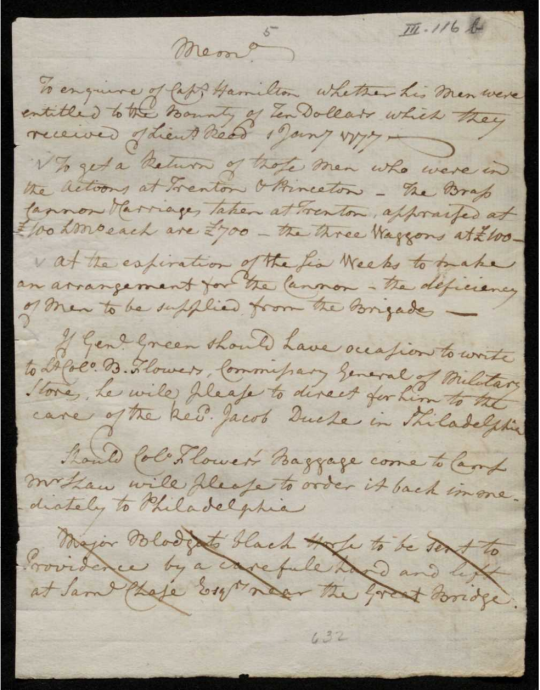
First up, on page five (seen above), Colonel Shaw wrote a series of "memos," or tasks needing completion. One of these, as seen at the top of the page, included "To enquire of Capt Hamilton whether his men were entitled to the Bounty of Ten Dollars which they received of Lieut Reed 1 Jany [January] 1777 --". The start of the new year came of course on the heels of the Battle of Trenton fought on December 26, 1776, wherein Hamilton's cannons played a major role.
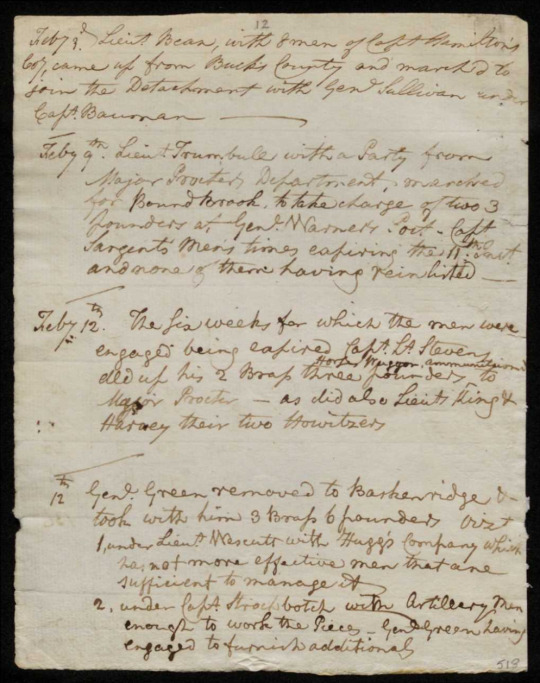
Next (and the most interesting to me), on page twelve (seen above) Shaw wrote a series of troop movements. Dated February 3, 1777, the colonel wrote that "Lieut [John] Bean, with 8 men of Capt Hamilton's Coy [Company] came [up?] from Bucks County and marched to join the Detachment with Genl [John] Sullivan and Capt [Sebastian] Bauman --". At this time, Hamilton was still in recovery from the illness he developed prior to Trenton, and the only other remaining officer in his company was his Third Lieutenant Thomas Thompson. This would thus mean that Hamilton and Thompson were left to watch over those that remained with the company while Bean and eight enlisted men were away.
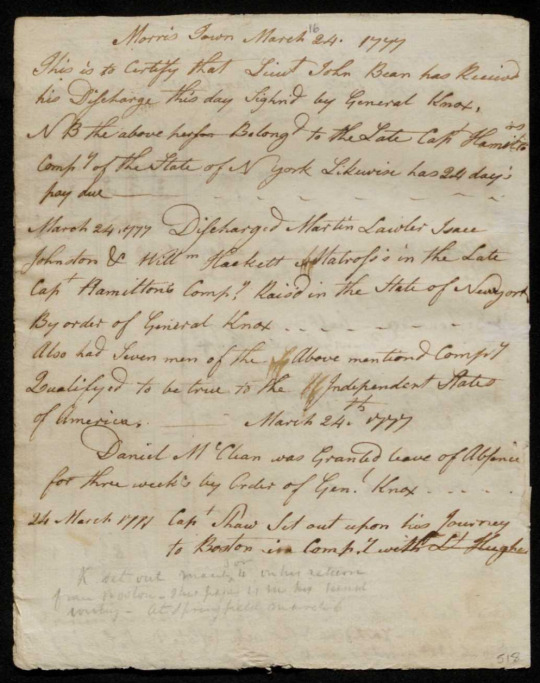
Lastly, on the final page of the record book (seen above) a series of discharges for men in Hamilton's company were written on March 24, 1777. By that time, Alexander Hamilton had joined Washington's staff as an aide-de-camp. Colonel Shaw, and another person who has not been identified, explicitly wrote:
Morris Town March 24, 1777
This is to certify that Lieut John Bean has Received his Discharge this day Sign'd by General Knox, N B the above person Belong'd to the late Capt Hamilton's Compy [Company] of the State of N[ew] York Likewise has 24 days pay due --
March 24, 1777 Discharged Martian Laulen[,] Isaac Johnston & Will'm [William] Hackett Matross's in the Late Capt Hamilton's Compy, Rais'd in the State of New York By order of General Knox . . . .
Also had seven men of the above mentioned compy Qualifyed [Qualified] to be true to the Independent States of America --
Note: the names of the matrosses discharged were cross-referenced with the names found in Alexander Hamilton's artillery company pay book for making my above transcription.
This entire record makes me extremely happy. I have new dates and more minute details and therefore a more concrete timeline surrounding Hamilton and the men of his company, yay!! Lately I have become very interested in the company's continuing service in the American Revolution after Hamilton's departure, and this record just gave me some fascinating information that links to some other information I have found on the whereabouts of some of these men written about above. But this is daring to open a can of worms that should be saved for a later post.
Frankly, it does not surprise me that I have not read about this record previously. It is so detailed and routine that it doesn't stand out necessarily on its own in the wider scope of things. However, as regards The American Icarus (and another project I may or may not be considering tackling?), this new information is very interesting and helpful. And I hope someone else here finds it interesting too.
#I would update my captain hamilton timeline if not for having hit my image and hyperlink limit on that post 😭#grace's random ramble#alexander hamilton#amrev#historical alexander hamilton#captain hamilton#henry knox#amrev fandom#historical hamilton#american revoluton#historical documents#18th century letters#continental artillery#continental army#george washington#battle of trenton#american history#historical research#historical resources#henry knox papers#gilder lehrman institute of american history#the american icarus#TAI#my projects#my writing#writeblr#new york provincial company of artillery
33 notes
·
View notes
Text
a MCU/Percy Jackson crossover with Bucky Barnes as a demigod. Ik your already thinking, he's a soldier so Ares obviously but he's actually a child of Aphrodite. Reasoning: before the war and when he's healed he is dressed very well. He wasn't really into war. he's never really fighting for the fight, he's fighting for someone or because he has to. He was forced to be a soldier in both instances (drafted/brainwashed). Mcu Bucky doesn't give off Ares kid vibes. So Aphrodite kid.
#plus theirs this version of Aphrodite called Aphrodite Areia which is a war like Aphrodite and the idea of this Aphrodite kid#forcibly going from 🥰💋🕊 to 🌹⚔️💔. b#bucky barnes#marvel mcu#marvel cinimatic universe#now comic bucky is an ares kid he was rasied by the military LITTERLY that was kinda fed up but thats old comics for you#the winter soldier#i think he should be pissed about hydras logo not being a fukning hydra! thats an octopus����#hydras have multiple HEADS that grow back when they get cus off 🙄#mcu headcanons#marvel#mcu bucky barnes#captain america#steve rogers#the avengers#captain america the winter soldier#percy jackson#percy jackon and the olympians#pjo#also any of the aus with the Avengers being a demigods are so funny like imagine going from the battle of Manhattan in like 09 then less#then five years later 2012 the battle of ny happens!#Demigod Avenger: YOU'LL NEVER GUESS WHERE THE HELL IM FIGHTING THESE ALIENS!!!!!#Demigod: no idea#Demigod Avenger: BACK IN NEW FUCKING YORK!!!!! THIS GODS FORSAKEN CITY CANT CATCH A BRAKE!!!!#Demigod: 💀💀💀 but really do you need help?#Demigod Avenger: no im good. got my ambrosia and nector. its just trippy to not be fighting with you all this time.#Demigod: ok. call if you need us and we'll be there#Demigod Avenger: 🥰✌🥰#fanfic aus#alternate universe
49 notes
·
View notes
Note
Hi Ho! Could I see some screenshots of the turtles wearing clothes? Like.. actual clothes.
Yes yes certainly
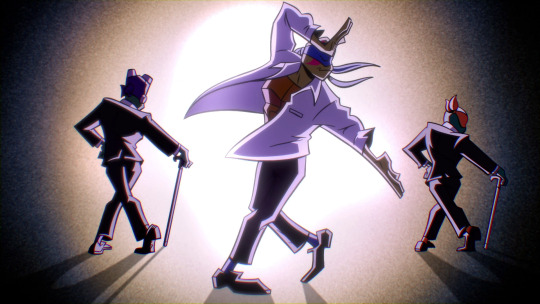

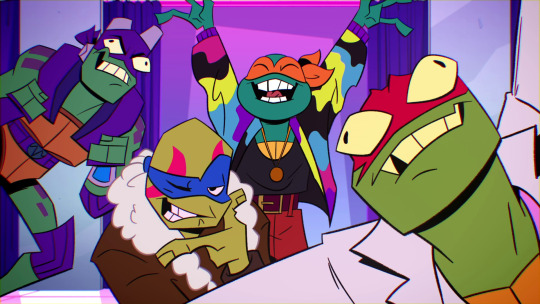


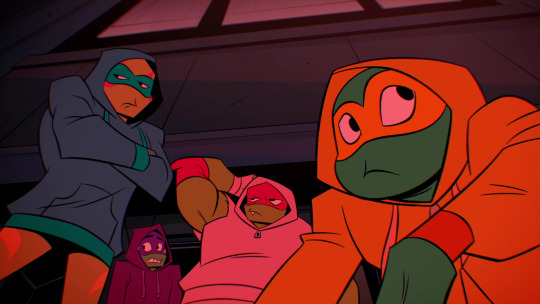


#Anonymous#requests#rottmnt#rise of the teenage mutant ninja turtles#the clothes don't make the turtle#mad dogs#donnie#raph#mikey#leo#air turtle#battle nexus: new york#answer
367 notes
·
View notes
Text

My tribute to @ingunnsarareblogs sunset duo!
#ingunndtinys#sunset duo#raphael#michelangelo#rottmnt#save rottmnt#i was a coward and didn't draw the hamato wanderers au#sorry#is the car looking familiar?#yes it's the earth protection force van#boom baby#bg is my nemesis#new york#battle#tmnt
444 notes
·
View notes
Text
Daily Rise Quotes: DAY 298
Draxum: No! We are trapped inside Big Mama's mystic orb! Look at where we are, and who we're with. How did we get here? Where are the turtles? Who even likes Foot Recruit?
Cassandra: Huh?
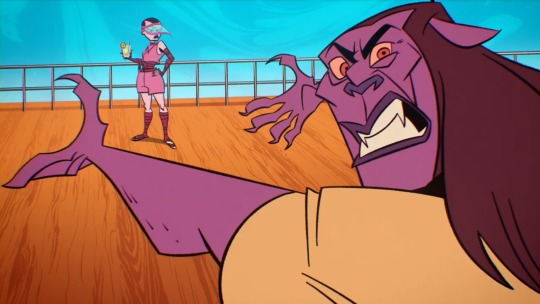
(Season 2, Episode 11 - Battle Nexus: New York)
#rottmnt#rise of the tmnt#rise of the teenage mutant ninja turtles#quote#risequotes#day 298#battle nexus: new york#battle nexus new york#alt text#tmnt#draxum#baron draxum#cassandra jones#casey jones
175 notes
·
View notes